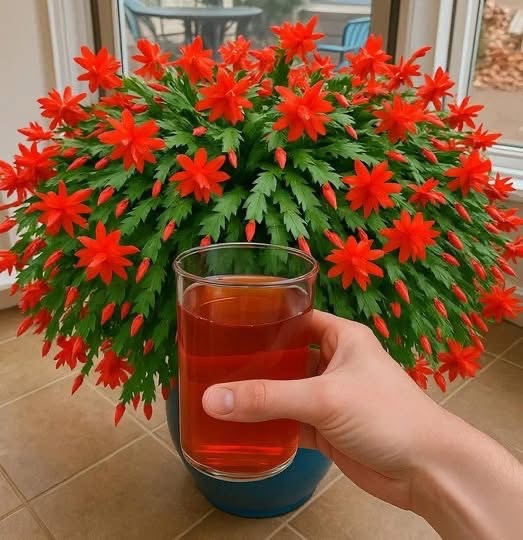How to Make a Christmas Cactus Bloom Year-Round – The “Bloom Recipe”
Introduction
The Christmas cactus (Schlumbergera) is a festive favorite, prized for its brightly colored blooms that light up the winter months. Native to Brazil’s tropical rainforests, it naturally flowers around Christmas time in the Northern Hemisphere — hence the name. However, with the right care, you can “trick” this beautiful plant into producing flowers more than once a year, transforming your home into a year-round botanical celebration.
History
- Originating in the coastal mountains of Brazil, the Christmas cactus was discovered in the early 19th century and brought to Europe by plant collectors.
- It quickly became popular in Victorian greenhouses, where horticulturists experimented with different light and temperature conditions to encourage off-season blooms.
- Modern plant enthusiasts have refined these techniques, learning how to stimulate multiple blooming cycles by mimicking the plant’s natural triggers.
Ingredients (Tools & Supplies)
- 1 healthy Christmas cactus plant (Schlumbergera)
- Bright but indirect light source (east-facing window or grow light)
- Well-draining cactus or succulent potting mix
- Balanced houseplant fertilizer (10-10-10 or 20-20-20)
- Watering can with room-temperature water
- A thermometer (to monitor nighttime temps)
- Humidity tray or small humidifier
- A dark, cool space for bloom induction
- Optional: Decorative pot for display
Instructions (Step-by-Step Blooming Formula)
Phase 1 – Growth & Health Maintenance
- Place your cactus in bright, indirect light. Avoid harsh midday sun that can scorch leaves.
- Keep the soil slightly moist but never soggy — allow the top inch to dry before watering.
- Maintain humidity by placing the pot on a pebble tray with water or using a humidifier.
- Feed monthly during spring and summer with diluted balanced fertilizer.
Phase 2 – Bloom Induction
- About 8–10 weeks before you want blooms, reduce watering slightly (just enough to prevent wilting).
- Move the plant to a cool (50–55°F / 10–13°C), dark location for at least 12–14 hours of darkness each day.
- Continue this cycle for 4–6 weeks until buds begin to form.
Phase 3 – Bloom Support
- Once buds appear, move the plant back to its bright location.
- Resume normal watering, but avoid sudden changes in moisture (which can cause bud drop).
- Keep temperature between 60–70°F (15–21°C).
Phase 4 – Repeat for Year-Round Blooms
- After each bloom cycle, rest the plant for 6 weeks with reduced watering.
- Restart the bloom induction process for a new flowering cycle — you can schedule blooms for spring, summer, and fall too.
Methods (Different Approaches)
- Natural Cycle Method: Let it bloom naturally in winter, then trigger another bloom in summer.
- Strict Light/Dark Control: Use blackout cloth or a closet to control light hours precisely.
- Temperature-First Method: Keep the plant cool for longer periods to trigger blooms even if light isn’t perfectly controlled.
Benefits
- Visual Joy: Bright flowers lift your mood year-round.
- Indoor Nature Therapy: Caring for plants reduces stress.
- Custom Bloom Timing: Perfect for birthdays, anniversaries, or special occasions.
- Longevity: A well-cared-for Christmas cactus can live for decades — some are passed down through generations.
Formation (How the Bloom Process Works)
- The cactus naturally blooms when it senses shorter daylight hours and cooler nights — this is its cue that “winter is coming.”
- By artificially creating these conditions, you can “fool” it into thinking it’s time to flower.
- Once buds set, warmth and steady care keep blooms vibrant for weeks.
Conclusion
With patience, consistency, and a little botanical trickery, your Christmas cactus can be a repeat performer, dazzling you with its tropical blooms at any time of year. Treat it well, and it will reward you for decades — becoming not just a plant, but part of your family traditions.
For the Lovers
If you adore plants that reward care with spectacular displays, the Christmas cactus will steal your heart. Watching those first buds swell and open is pure magic — and when you learn to make it bloom year-round, you’re not just a plant owner; you’re a bloom whisperer. It’s the kind of plant that makes you smile every time you walk past it, no matter the season.
